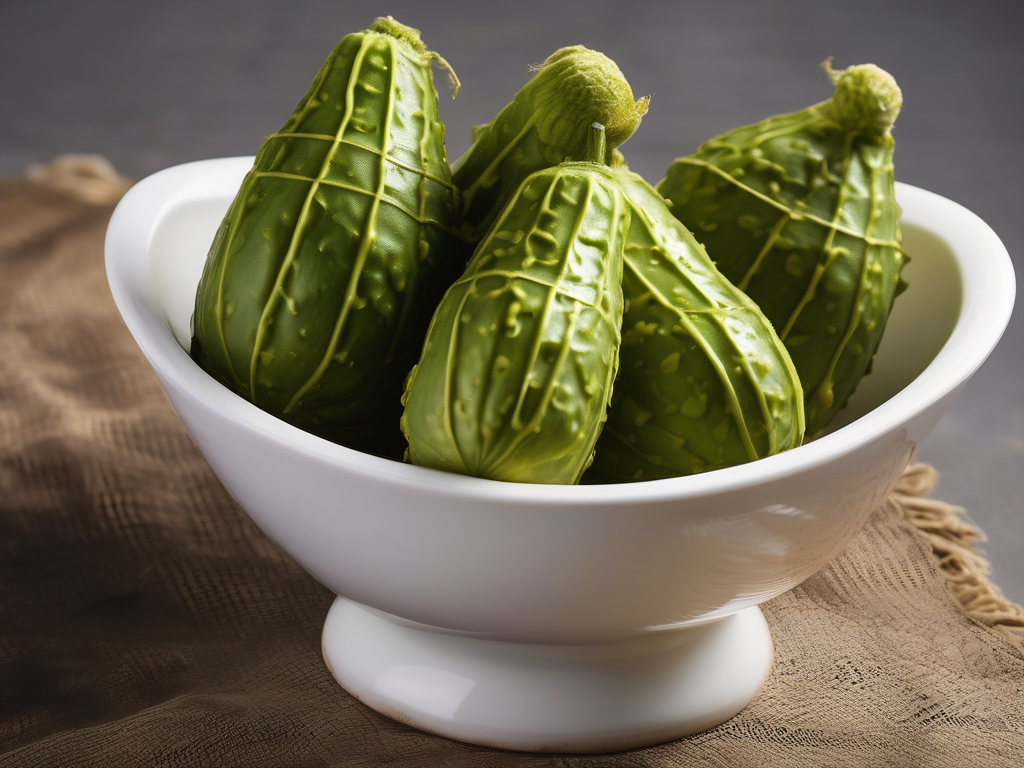
Is it Safe to Eat Wrinkled Bitter Gourd?
Get Your Free Food Safety Cheat Sheet
30 most common foods with instant answers. Print it and stick it on your fridge—completely free!
Is it Safe to Eat Wrinkled Bitter Gourd?
Bitter gourd, also known as bitter melon, is a popular vegetable in many cuisines due to its unique bitter taste and various health benefits. However, it's not uncommon to find wrinkled bitter gourd in the produce section of your local grocery store or in your refrigerator. The question that often arises is whether it is safe to eat wrinkled bitter gourd. In this blog post, we will explore the safety of consuming wrinkled bitter gourd and provide you with practical tips on how to ensure food safety when it comes to this vegetable. (Bitter gourd)
Understanding Wrinkled Bitter Gourd
Wrinkled bitter gourd is a common sight, especially if the vegetable has been stored for an extended period. The wrinkling of bitter gourd is primarily due to dehydration, loss of moisture, and natural aging of the vegetable. While the appearance of wrinkled bitter gourd may not be very appealing, it does not necessarily mean that the vegetable is unsafe to eat. However, there are a few factors to consider before consuming wrinkled bitter gourd.
Factors to Consider
-
Texture: Check the texture of the bitter gourd. If it feels excessively soft or mushy, it may indicate that the vegetable has started to spoil.
-
Smell: A strong, unpleasant odor coming from the bitter gourd is a sign of spoilage and indicates that it should be discarded.
-
Color: Discoloration or dark spots on the bitter gourd may also indicate spoilage. Fresh bitter gourd should have a vibrant green color.
-
Mold: If you notice any mold growth on the wrinkled bitter gourd, it is best to discard it immediately.
Safety Tips for Consuming Wrinkled Bitter Gourd
While wrinkled bitter gourd may still be safe to eat under certain conditions, it is essential to follow these safety tips to minimize the risk of foodborne illnesses:
Storage
-
Refrigeration: Store bitter gourd in the refrigerator to extend its shelf life and maintain its freshness. Wrinkling can be slowed down by keeping the vegetable in the crisper drawer.
-
Moisture: To prevent dehydration and wrinkling, store bitter gourd in a perforated plastic bag or a container with a damp paper towel.
Preparation
-
Wash Thoroughly: Before using wrinkled bitter gourd, wash it thoroughly under running water to remove any dirt or contaminants on the surface.
-
Trimming: If the wrinkled parts of the bitter gourd are excessive, consider trimming them off before cooking to ensure better taste and texture.
Cooking
-
Cooking Methods: Opt for cooking methods that involve high heat, such as stir-frying or boiling, to kill any potential bacteria that may be present on the wrinkled bitter gourd.
-
Consumption: If you are unsure about the safety of eating wrinkled bitter gourd, it is best to err on the side of caution and discard it to avoid any potential health risks.
Conclusion
In conclusion, wrinkled bitter gourd is not necessarily unsafe to eat, but it is essential to assess the vegetable's condition before consuming it. By following proper storage practices, inspecting the vegetable for signs of spoilage, and taking necessary precautions during preparation and cooking, you can enjoy the nutritional benefits of bitter gourd safely. Remember, when in doubt, it is always better to discard the vegetable rather than risking foodborne illness. Stay informed, stay safe, and enjoy your bitter gourd dishes responsibly. (Bitter gourd)
Related Posts
Here are some other articles you might find helpful:
Authoritative Food Safety References
These agencies and university labs inform every tip and health precaution we publish.
USDA FoodKeeper – Cold Storage Guidelines
Official refrigerator, freezer, and pantry timelines maintained by the U.S. Department of Agriculture.
Visit USDA FoodKeeperFDA Produce Safety Rule & Grower Guidance
Field-to-fridge handling practices that prevent contamination of fruits, vegetables, and leafy greens.
Visit FDA Produce SafetyCDC Foodborne Illness Prevention Hub
Surveillance-backed guidance on pathogens, symptoms, and steps to reduce foodborne illness risk.
Visit CDC Food SafetyUC Davis Postharvest Technology Center
University research detailing optimal storage atmospheres for produce after harvest.
Visit UC Davis PostharvestPenn State Extension – Home Food Preservation & Safety
Peer-reviewed extension bulletins on safe canning, chilling, and reheating practices.
Visit Penn State ExtensionGet Your Free Food Safety Cheat Sheet
30 most common foods with instant answers. Print it and stick it on your fridge—completely free! Want more? Upgrade to the complete guide with 70+ foods.
Scan your food directly and get instant safety info using our AI-powered camera feature.